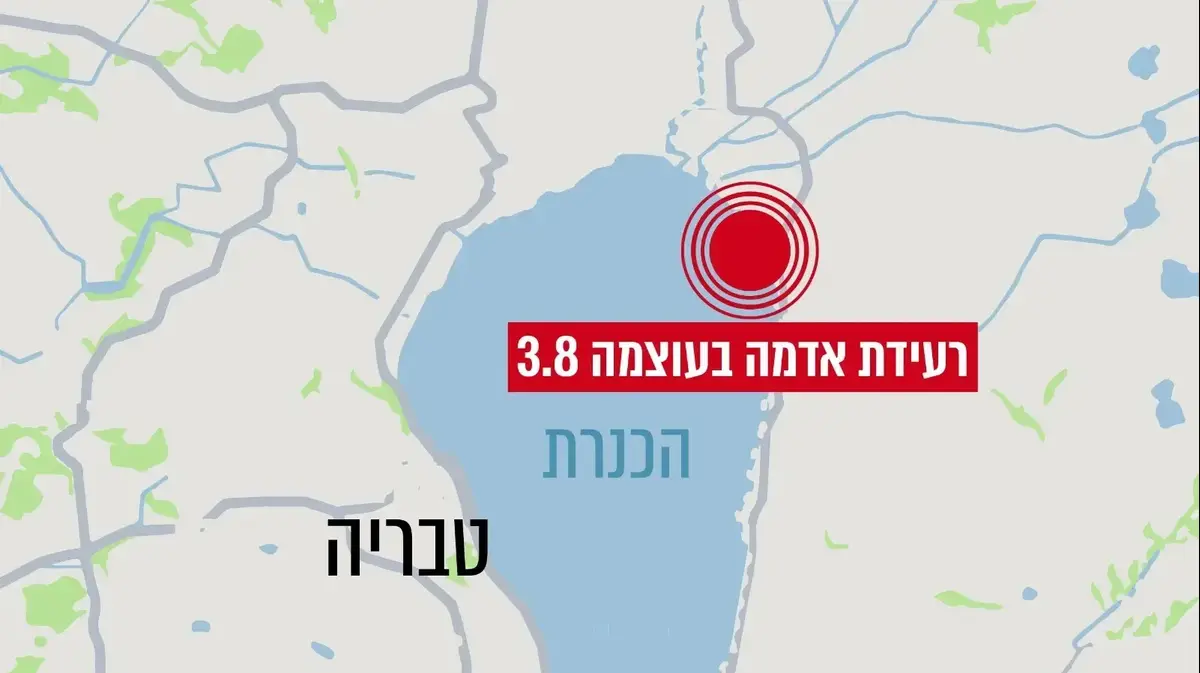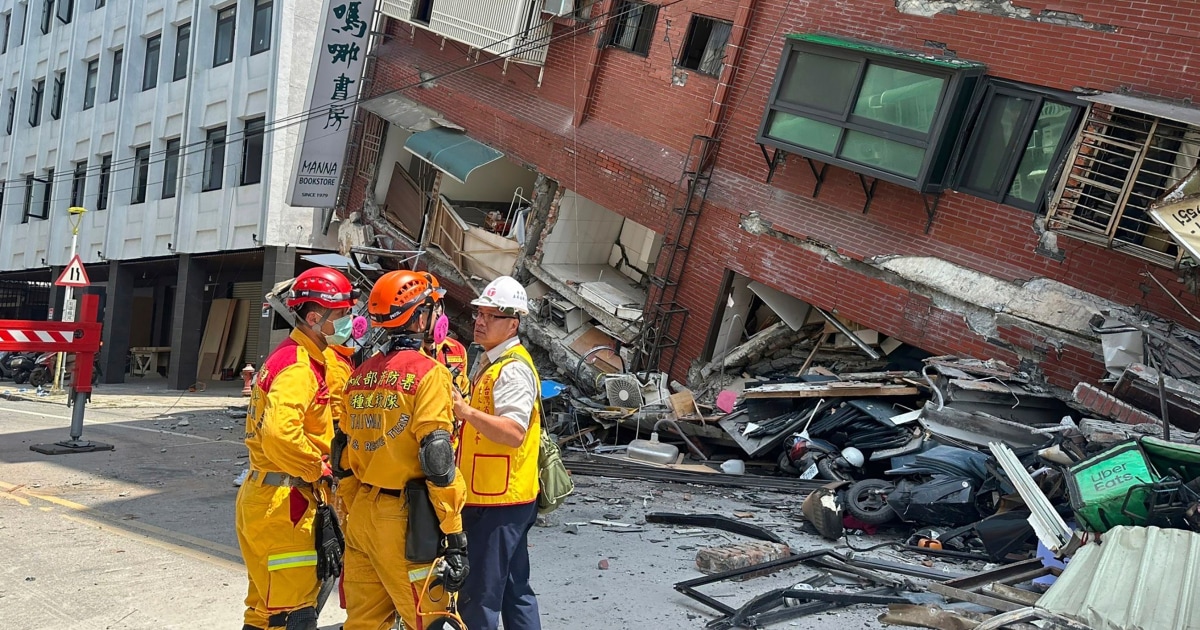Aerial footage of earthquake destruction in Turkey and Syria 0:50
(CNN Spanish) --
Shortly after 4 am, when most people were asleep, a strong earthquake of magnitude 7.8 struck Turkey.
The quake was so strong that it was felt in other countries in the Middle East region, especially in northwestern Syria, which is near the epicenter of the quake (located 23 kilometers east of Nurdagi, Gaziantep Province, Turkey ).
The consequences of the earthquake - which is already considered the most powerful quake on Turkish soil in more than 80 years - have been devastating: until after 1 pm this Tuesday (Eastern Time), the death toll from the disaster in Turkey and Syria amounted to more than 7,700, the number of injured people was more than 35,000 and the collapsed buildings numbered in the thousands in both countries.
Why the earthquake in Turkey and Syria is one of the deadliest of this century?
Why was the earthquake in Turkey so strong?
There are several factors that help us understand why this earthquake, which has caused at least 125 aftershocks of magnitude 4 or greater, has been so strong and devastating.
This is the footprint of the deadly earthquake that shakes the world 1:04
"complex zone"
Carlos Miguel Valdés González, doctor of the Department of Seismology of the Institute of Geophysics of the National Autonomous University of Mexico (UNAM), explained that Turkey is in a complex area that is conducive to earthquakes, since practically the country is surrounded by three plates.
advertising
"In the northern part, (Turkey) has the Eurasian plate, in the southern part the African plate and in the southeastern part the Arabian plate," Valdés commented in an interview with CNN en Español.
To make this clearer, let's remember how earthquakes develop.
According to the UNAM academic, the outermost part of the Earth is where we live, which is known as the crust and which we can imagine as a spherical puzzle.
The pieces of this puzzle are the plates and they move in different directions pushed by the internal heat of the planet.
The point at which the plates make contact with each other is known as failure.
"The wall collapsed on me": witness tells how he lived through the earthquake in Syria
On average, Valdés said, each year the plates move 3 to 6 centimeters at a speed that humans cannot detect.
As they move, stress or energy accumulates at the points of contact (faults) of the plates.
When that energy accumulated in the faults no longer resists and the rock breaks, an earthquake occurs, the magnitude of which will depend on the energy that was accumulated and the size of the rupture in the fault in question.
So Turkey—which is between three plates—had a major release of energy on a fault, which triggered the earthquake.
Specifically, "the earthquake that occurred in the area of Turkey and Syria (...) is an event related to the East Anatolia fault," which passes through Gaziantep, the epicenter in the southeast of the country, explained the academic .
The quake had catastrophic consequences in part because the East Anatolian fault lies in highly populated areas, Valdés added, which can be seen in the thousands of people killed and injured so far.
The disaster increased even more because the event was "shallow", that is, it originated at a shallow depth of the surface (almost 18 kilometers), so that the seismic waves propagated more easily.
"The energy is transformed into what we know as surface waves, which are large waves, waves that also have a long duration. It is difficult to talk about the duration of an earthquake, but I would estimate that for the magnitude of 7.8 of this earthquake in some places (...) could have easily been more than a minute, hardly more than two minutes," he said.
A similar release of energy could also occur in northern Turkey (Istanbul, for example, is in the northwest), since the North Anatolian fault runs through that area of the country, but when it will happen cannot be predicted.
In short, a nation that is prone to earthquakes.
The type of failure
The National Seismological Network (RSN) of Costa Rica points out that there are mainly three types of faults that generate earthquakes: normal, lateral displacement and reverse.
In the case of the recent earthquake in Turkey, it is a lateral displacement fault, Valdés pointed out, adding that a well-known fault of this type is the San Andreas fault, "which separates two large plates: the Pacific plate and the North American plate.
On one side of these faults is the city of San Francisco and on the other is Los Angeles;
while the first one moves to the east, the second does so to the west, so both cities are getting closer and closer laterally and there could be a great earthquake due to the energy accumulated in the San Andreas fault.
According to the expert, the Anatolian block (which includes the aforementioned faults of the East and North) also separates two large plates: the Arabian and the African.
The Anatolian block accumulated energy in the eastern fault due to its contact with the plates and then the earthquake in Turkey was unleashed.
Previously, Valdés mentioned, studies had already been carried out on "the possible risk of this fault, Eastern Anatolia, and they had established that (earthquakes) could occur between magnitudes of 6.5 to 7.7", which is close to the magnitude of the recent earthquake.
It is possible to verify that the East Anatolian fault is a lateral displacement fault with the intensity map of the earthquake.
It could be felt from very strong to severe in a large lateral or horizontal strip, which is where said fault passes.
External factors
The consequences of the earthquake have been even more devastating due to external factors.
The earthquake itself released an energy close to that produced by 27,000 atomic bombs like those of Hiroshima and Nagasaki, explained the expert from UNAM's Institute of Geophysics, which is enough to cause significant devastation.
However, the damage caused by the earthquake is increased by extreme weather conditions.
A winter storm in the region where the quake struck is exacerbating the disaster, according to CNN meteorologists.
"Hundreds of thousands of people are affected by this. It's cold. It's raining. Roads could be affected, that means your food, your livelihood, your children's care, your family's care," said Karen Maginnis, a meteorologist. from CNN.
This same climate makes relief, search and rescue work difficult, according to Turkish authorities.
"The weather conditions and the scale of the disaster make it difficult for our teams to reach the region," Turkey's Health Minister Fahrettin Koca said Monday, adding that some of the country's helicopters were unable to take off on the day of the quake "due to the weather conditions".
Along with the weather, there are other factors that contributed to increasing the disaster, such as old buildings that do not have adequate construction against earthquakes.
The quake collapsed more than 5,600 buildings and caused damage to centuries-old archeological sites including Gaziantep Castle, a historic site and tourist attraction in southeastern Turkey.
The problem of old buildings is mixed with the difficult situation in Syria.
Those affected by the earthquake were already unprotected before, since it is estimated that in this country more than 4 million people depended on humanitarian assistance.
In addition, northwestern Syria, the area of the country affected by the earthquake, has been in conflict over the civil war that began more than a decade ago, leading to talk of "a crisis within a crisis."
Currently, various parts of northwestern Syria, including Idlib, are still controlled by anti-government rebels.
How is humanitarian aid managed in Turkey and Syria?
3:33
With reporting from CNN's Yong Xiong, Sahar Akbarzai, Atay Alam, Hira Humayun, Monica Garrett, Lilit Marcus, Yusuf Gezer, Rhea Mogul, Dalya Al Masri and Celine Alkhaldi.
SyriaearthquakeTurkey






/cloudfront-eu-central-1.images.arcpublishing.com/prisa/E2SOPDAIKRGJPJY4T2WETDP77I.jpg)


/cloudfront-eu-central-1.images.arcpublishing.com/prisa/KMEYMJKESBAZBE4MRBAM4TGHIQ.jpg)



